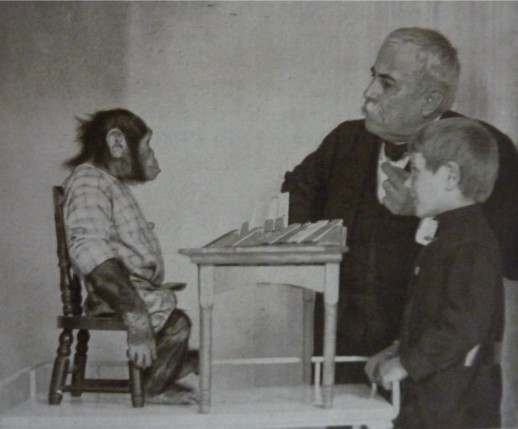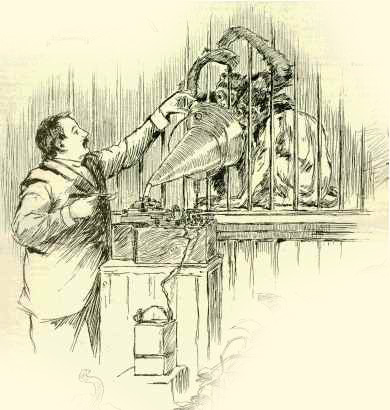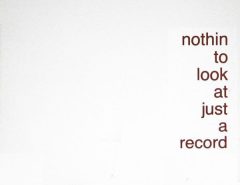
Hace tiempo que había ojeado el libro editado por Lisa Gitelman y Geoffrey B. Pingree para M.I.T. titulado New Media, 1740-1915 (el enlace tiene regalo), pero hasta hace muy poco no le había dedicado el tiempo necesario y he encontrado dos capítulos tan interesantes como clarificadores sobre la historia de la fonografía.
El primer capítulo, titulado Souvenir Foils: On the Status of Print at the Origin of Recorded Sound firmado, por la editora Lisa Gitelman, está dedicado a la historia de los primerísimos años del fonógrafo. Comenta una cosa especialmente interesante. Entre 1878 y 1880 no se contempla otro uso para este aparato que el de extensión del texto escrito, era una máquina que hablaba. Esta talking Machine tenía fines mnemotécnicos y correctores del lenguaje, como apuntaba Pygmalion de George Bernard Shaw, la que se considera primera obra de ficción sobre el tema escrita en 1913. Comentar esta obra daría para largo.
Pero dentro de lo anecdótico está otro dato MUY interesante para la historia del arte sonoro. Durante las exhibiciones itinerantes del invento, había una pequeña pieza satírica titulada Prof. Black’s phunnygraph or, Talking machine, a colored burlesque on the phonograph escrita por Frank Hockenbery en Chicago, T. S. Denison 1886.
Confirming much about the phonograph exhibitions was a “colored burlesque on the phonograph” entitled Prof. Black’s Phunnygraph or Talking Machine. Frank Hockenbery’s skit offers a comment on the phonograph lectures that it lampoons. The term “burlesque” did not then denote striptease, but rather a topical, risqué comedy, full of witticisms pointed at events of the day. The butt of Hockenbery’s burlesque were the phonograph demonstrations of 1878. As a “colored” burlesque, Prof. Black’s Phunnygraph drew much of its “inspiration” from fifty years of minstrel shows. The theatrical season of 1878 had been characterized by a bewildering outbreak of so-called “mammoth minstrel shows,” touring troupes of 40 to 60 performers trying to breathe life back into a hackneyed form by finding novelty in numbers. Hockenbery’s Phunnygraph was probably intended as an interlude in one of these racist pageants, since its concluding stage directions call for a minstrel staple, “moving to half circle, [and as] soon as half circle is struck, begin negro chorus or plantation melody. Minstrel business.”
Whatever its exact provenance, Prof. Black’s Phunnygraph clearly takes aim at phonograph exhibitors like Edward Johnson and Frank Lundy by assuming the form of a lecture “on de Phunnygraph, or Talking Machine, as she am called by de unsophisticated populace.”
Pues bien, este Phunnygraph o máquina habladora fue representado de la siguiente manera.
En esta página pueden verse algunas vistas de detalle, acompañadas del artículo sobre las trompetillas de phunnygraph, no tanto de lo que nos interesa ahora. Como puede verse, popularmente esta máquina que habla fue entendida como una especie de entonarumori habitado por cinco niños. Conociese o no Russolo este libreto o este espectáculo, es de suponer que en las barracas de feria de principios del s.XX se realizaban espectáculos de este tipo. Por otra parte, es interesante ver como el fonógrafo no era exactamente entendido como un reproductor del sonido, sino como una máquina que hablaba, que al parecer en un principio causó sorpresa su falta de labios mecánicos que sí poseían los autómatas.

El otro capítulo, también interesantísimo, está escrito por Gregory Radick, autor del libro The Simian Toungue. El capítulo titulado R. L. Garner and the Rise of the Edison Phonograph in Evolutionary Philology trata sobre este estudioso y sobre sus experimentos en el zoo de Central Park, entre otras cosas, donde grababa a los simios intentando encontrar coherencias en su discurso en lo que se llama filología evolutiva. R. L. Garner, al que podemos ver en estas imágenes, estaba fuertemente influido por las funciones de la máquina, preparadas para estudiar el lenguaje.
The Speech of Monkeyswas widely reviewed, and it was soon translated into German and Russian. The Spectator reviewer emphasized the importance of the manipulative possibilities the phonograph afforded: “By recording the monkey notes on the drum, and then spinning the machine at a slow rate, the sounds are analysed, and modulations detected, and vowel sounds resolved, in a way hitherto impossible.”60 Other reviewers praised the use of the phonograph but lamented Garner’s interpretations of his phonographic results. Writing in the Dial, the American psychologist Joseph Jastrow commented: “The author had the happy idea of studying the chatterings of monkeys by recording them in a phonograph but it was one thing to have a good idea, and another to be possessed of the proper ingenuity, patience, and scientific habits, to carry it out.
Fuese o no por influencia simia, Garner llego a desarrollar un proyecto de proto-stereo que envió a Edison en una carta, y que puede verse reproducida en el libro. ¡A disfrutar de la lectura!






Leave a Reply
Lo siento, debes estar conectado para publicar un comentario.